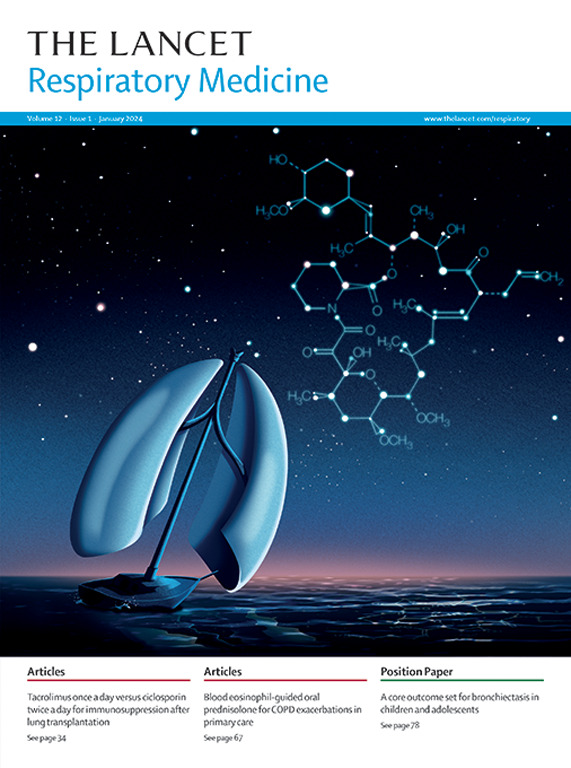Reframing remission in severe asthma: a conceptual framework for distinguishing disease activity versus damage
IF 32.8
1区 医学
Q1 CRITICAL CARE MEDICINE
引用次数: 0
Abstract
Remission is emerging as a feasible treatment goal in moderate-to-severe asthma, driven by the success of biologic therapies in controlling inflammation and reducing exacerbations. Yet current definitions of remission—focused on symptom control, lung function, and corticosteroid reduction—lack precision, can only be ascertained retrospectively, and do not reflect the underlying mechanisms and pathology that drive disease progression. This gap limits the clinical applicability of these definitions and might obscure opportunities for early, disease-modifying intervention. In this Series paper, we propose a refined framework for understanding and reaching remission, centred on distinguishing modifiable disease activity from irreversible remodelling and comorbidity-related factors that contribute to disease burden. We introduce the concept of at-risk asthma as a crucial phase characterised by high disease activity and immune dysregulation, in which timely intervention might prevent irreversible airway and extrapulmonary damage and support long-term disease modification. We examine how symptoms, lung function impairment, and exacerbations can arise from distinct and overlapping mechanisms, underscoring the need for careful attribution in clinical assessment. We also outline four key pathophysiological domains—airway hyper-responsiveness, immune hyper-responsiveness, immune remodelling, and structural remodelling—and describe their temporal evolution and implications for treatment responsiveness. Finally, we present a domain-based strategy for assessment and intervention, linking targeted therapies to underlying mechanisms. This approach supports more personalised treatment decisions and redefines remission, not simply as the absence of symptoms, but as stabilisation of disease biology. As the field advances towards earlier intervention and more tailored application of biologics in at-risk asthma, such a framework could be essential to improve long-term outcomes and prevent overtreatment of irreversible disease.重定义严重哮喘的缓解:区分疾病活动性与损害的概念框架
由于生物疗法在控制炎症和减少恶化方面的成功,缓解正在成为中重度哮喘的可行治疗目标。然而,目前对缓解的定义侧重于症状控制、肺功能和皮质类固醇减少,缺乏准确性,只能回顾性确定,不能反映驱动疾病进展的潜在机制和病理。这一差距限制了这些定义的临床适用性,并可能模糊了早期疾病改善干预的机会。在本系列论文中,我们提出了一个理解和达到缓解的完善框架,重点是区分可改变的疾病活动与不可逆的重塑和导致疾病负担的合并症相关因素。我们引入了高危哮喘的概念,认为这是一个以疾病活动性高和免疫失调为特征的关键阶段,在这个阶段,及时干预可能会防止不可逆的气道和肺外损伤,并支持长期的疾病改善。我们研究了症状、肺功能损害和恶化是如何从不同的重叠机制中产生的,强调了在临床评估中仔细归因的必要性。我们还概述了四个关键的病理生理领域——气道高反应性、免疫高反应性、免疫重塑和结构重塑——并描述了它们的时间演变和对治疗反应性的影响。最后,我们提出了一种基于域的评估和干预策略,将靶向治疗与潜在机制联系起来。这种方法支持更个性化的治疗决策,并重新定义缓解,不仅仅是症状的消失,而是疾病生物学的稳定。随着该领域朝着早期干预和在高危哮喘中更有针对性地应用生物制剂的方向发展,这样一个框架对于改善长期结果和防止对不可逆转疾病的过度治疗至关重要。
本文章由计算机程序翻译,如有差异,请以英文原文为准。
求助全文
约1分钟内获得全文
求助全文
来源期刊

Lancet Respiratory Medicine
RESPIRATORY SYSTEM-RESPIRATORY SYSTEM
CiteScore
87.10
自引率
0.70%
发文量
572
期刊介绍:
The Lancet Respiratory Medicine is a renowned journal specializing in respiratory medicine and critical care. Our publication features original research that aims to advocate for change or shed light on clinical practices in the field. Additionally, we provide informative reviews on various topics related to respiratory medicine and critical care, ensuring a comprehensive coverage of the subject.
The journal covers a wide range of topics including but not limited to asthma, acute respiratory distress syndrome (ARDS), chronic obstructive pulmonary disease (COPD), tobacco control, intensive care medicine, lung cancer, cystic fibrosis, pneumonia, sarcoidosis, sepsis, mesothelioma, sleep medicine, thoracic and reconstructive surgery, tuberculosis, palliative medicine, influenza, pulmonary hypertension, pulmonary vascular disease, and respiratory infections. By encompassing such a broad spectrum of subjects, we strive to address the diverse needs and interests of our readership.
 求助内容:
求助内容: 应助结果提醒方式:
应助结果提醒方式:


